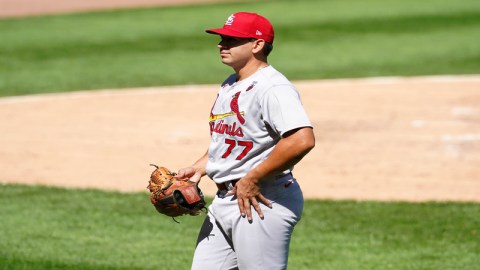Dr. James Andrews has logged over 40,000 surgeries and become one of the most preeminent sports physicians in the country.
But even he wasn’t prepared for something like this.
Andrews said that he sees four times as many children suffering from overuse injuries in youth sports than he did five years ago, and more children are going under the knife for chronic sports injuries, according to The New York Times.
Further statistics documenting the sharp increase in adolescent sports injuries are staggering. In Until It Hurts: America’s Obsession with Youth Sports and How It Harms Our Kids, author Mark Hyman found that over 3.5 million children under the age of 15 require medical treatment for sports injuries, with nearly half of those resulting from overuse.
Children are at a bigger risk for tendinitis, stress fractures and damage to the growth plates of bones that can stunt them for life, N. Maffulli and P. Helms, two British physicians, discovered in 1988. Yet over 20 years later, children are still being pushed far beyond their physical limitations.
“Young athletes are not just smaller athletes, and they should not become sacrificial lambs to a coach’s or parent’s ego,” Maffulli and Helms said in their book, The Archives of Disease in Childhood.
Joel S. Brenner, a doctor for the America Academy of Pediatrics’ Council on Sports Medicine and Fitness, agreed.
“Unfortunately, too often the goal is skewed toward adult [parent/coach] goals either implicitly or explicitly,” Brenner said. “As more young athletes are becoming professionals at a younger age, there is more pressure to grab a piece of the ‘professional pie,’ to obtain a college scholarship or to make the Olympic team.”
But those slim chances — only two to five out of every 1,000 high school athletes make the professional level — are coming at an astronomical cost. As parents, coaches, and players continue to ignore the body’s demand to stop, the pediatrics council is promoting healthy training habits for adolescent athletes.
The council recommends playing a sport for one season only, and making sure to include adequate time to rest the muscles that are primarily exhausted, meaning a two-to-three-month hiatus from that sport. Also, scheduling one or two days per week away from competitive athletics “to allow [athletes] to recover both physically and psychologically” is vital to avoid burning the body out.
Too often, the pediatrics council found, high school athletes are playing one sport all year long, not giving their muscles and joints ample time to rest and recover. With such focus on one sport, there is no opportunity for other exercise — even in the form of another sport — to take the pressure off certain muscles and strengthen others.
While the allure of a shot at the majors dances in the heads of young athletes, it is beginning to cloud their judgment, so much so that the notion of playing through extreme pain is worth the price.



